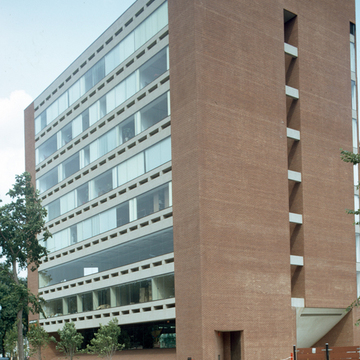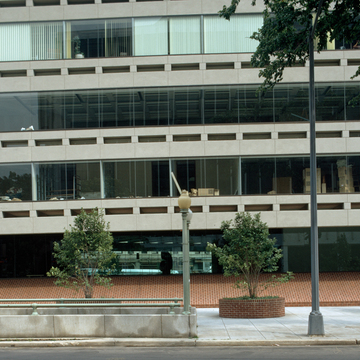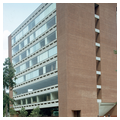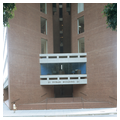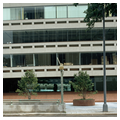Washington's numerous planning review boards have not favored innovative or bold office building design during the last century. Therefore Hartman and Cox's Euram Building, which addressed Dupont Circle as an important urban open space, was a minor triumph under restrictive circumstances. Curtain wall construction on the Connecticut Avenue and 19th Street facades expresses
You are here
Euram Building
1972, Hartman-Cox. 21 Dupont Circle
If SAH Archipedia has been useful to you, please consider supporting it.
SAH Archipedia tells the story of the United States through its buildings, landscapes, and cities. This freely available resource empowers the public with authoritative knowledge that deepens their understanding and appreciation of the built environment. But the Society of Architectural Historians, which created SAH Archipedia with University of Virginia Press, needs your support to maintain the high-caliber research, writing, photography, cartography, editing, design, and programming that make SAH Archipedia a trusted online resource available to all who value the history of place, heritage tourism, and learning.















